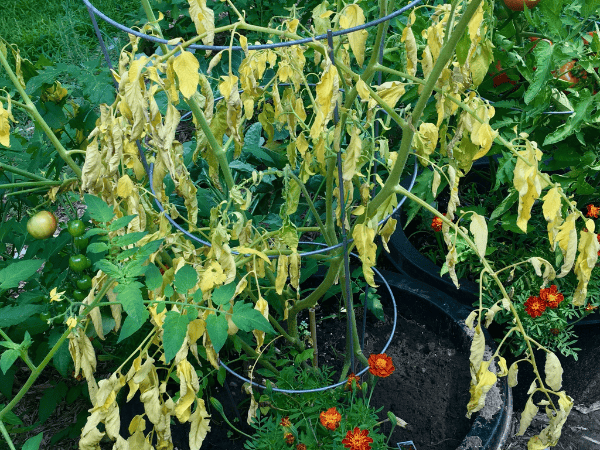
Gardening Problems in the Late Summer
Do you have a few garden problems cropping up at this time of the year? At this late point in the season, some gardeners may notice that their plants don’t look as exuberant as they did in the spring and early summer. There may be less new growth and some lower leaves may be turning brown and dropping off. Insects may be attacking and leaves may be plagued with fungal diseases. In the heat of the afternoon, the soft tips of leaves may even be wilting. These are all common problems for the late summer garden. Read on to learn how to manage these common problems in the late summer garden.
Garden Problems #1: Insects
This is the time of year when most gardeners breathe a sigh of relief because typical spring pests like slugs, cutworms, grubs, maggots and flea beetles fade from the landscape. However, summer insects like Japanese beetles, webworms, and spongy moths soon replace them. One way to control these pests is to handpick them when they are most visible. Dropping them in a bucket of soapy water puts an end to them. To control webworms and spongy moth caterpillars, prune away webworm nests and apply Bacillus thuringiensis (BTK spray). Japanese beetle traps can be set out to capture this voracious pest. At this time of the year, you want to keep a close eye on your lawn for signs of white grubs and other lawn pests. Treat your lawn with nematodes before the grubs have a chance to destroy your entire lawn.
Garden Problems #2: Diseases
Plants may have been weakened and stressed by recent high temperatures. This puts them at risk to develop powdery mildew and other fungal diseases like black spots and rust. Fungal diseases don’t always kill but may lessen or stunt plant growth. High humidity and nighttime temperatures further encourage the development and spread of plant diseases. Remove and destroy any leaves infected with rust, black spot or mildew. Selective pruning of overcrowded branches increases air circulation which can prevent disease. Start spraying with garden sulphur fungicide or Bordo Copper spray when the fungus is first visible. If past experience tells you certain plants are susceptible to disease, a preventive fungicide application would be very beneficial. Spray all plant parts thoroughly and repeat every 7 to 10 days as needed.
Blossom end rot is a specific problem in the vegetable garden on tomatoes and peppers. This condition is a result of a calcium deficiency in the soil. Providing consistent moisture by watering the soil and not spraying the foliage will help, as will applying a calcium-rich fertilizer like lime or gypsum.
Click here to learn more about Bottom End Rot In Tomatoes.
Garden Problems #3: Water- Too much, Too Little, Too Late
For our gardens to be at their best they need a consistent supply of moisture. Too little or too much water can be equally harmful. During hot dry spells, we need to ensure we water our gardens deeply. Applying a 2-3 inch layer of mulch in the early spring ensures that the soil doesn’t lack moisture at this time of year. A re-application of a fresh layer of mulch at this late time of year may also be necessary; focusing on flowerbeds, vegetable gardens, and the drip line of young or recently (trans) planted trees. This helps keep the soil cool and moist for the benefit of your plants. As an added bonus, the mulch will help suppress a lot of weeds making garden maintenance much easier.
Most plants and lawns need a minimum of an inch of water each week during summer months, but up to three inches of water when temperatures reach 30 degrees and above. Conserve water by using soaker hoses, and water early in the morning to allow foliage to dry quickly, reducing the potential for fungal disease.
Garden Problems #4: Fertilizing
Late-blooming plants and summer annuals benefit from regular fertilizing. You can promote flower growth by applying a high phosphate, water-soluble fertilizer (like a 15-30-15) every two weeks. If your lawn is dry and dormant then now is not a good time to fertilize. Without adequate water, applying lawn food during hot dry spells will only burn the grass. It is better to wait until the lawn has started to recover and is sufficiently moist to give it a feeding. A late-summer – early fall fertilizing will speed the lawn’s recovery and help strengthen it for the coming winter.





